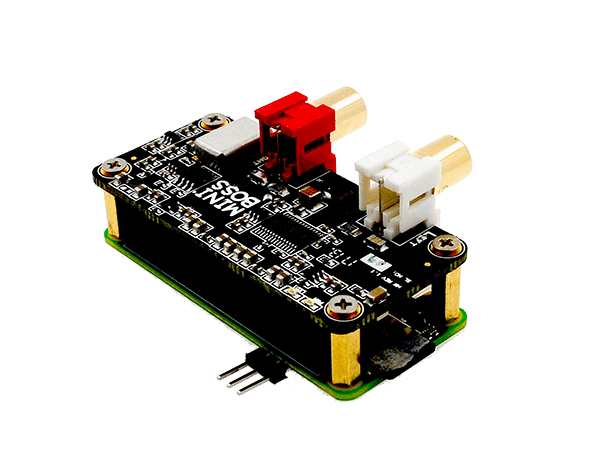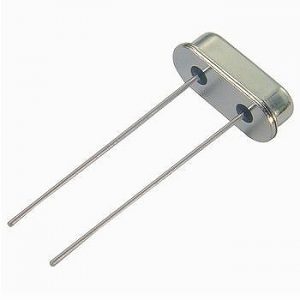HiFi DAC on Raspberry Pi
Raspberry Pi has an I2S (Inter-IC Sound) interface. Music data and clock data are exchanged through the I2S. Because clock data is exchanged in the same interface with music data, I2S is so called comparatively a high quality sound interface.
On the other hand, S/P DIF is famous interface to exchange music data trough optical fiber. Music data and clock data are separately transferred, so S/P DIF is relatively large jitter path.

It is getting popular to connect a Hi-Fi DAC device and a Raspberry Pi via the I2S interface.
There are a lot of Hi-Fi DACs that are specialized to connect a Raspberry Pi via the I2S interface.
| vendor | product name | DAC IC | zero size | Master Mode (clock) | headphone amp | sampling converter (ASRC) | remarks | price |
|---|---|---|---|---|---|---|---|---|
| HIFIBERRY | DAC+ LIGHT | ES9023 | ◯ | $22.90 | ||||
| DAC+ STANDARD | PCM5122 | $28.90 | ||||||
| DAC+ ZERO | PCM5101 | ◯ | $16.90 | |||||
| DAC+ PRO XLR | PCM5242 | 22/24MHz | XLR output | $39.90 | ||||
| Allo | Piano 2.1 HI-FI DAC | PCM5142×2 | $49.00 | |||||
| PIANO DAC | PCM5122 | TPA6133A2 | $27.00 | |||||
| BOSS DAC | PCM5122 | 45/49MHz | $65.00 | |||||
| MINIBOSS DAC | PCM5122 | ◯ | 45/49MHz | $39.00 | ||||
| IQaudIO | Pi-DAC+ | PCM5122 | TPA6133A | €30.00 | ||||
| Pi-DAC Zero | PCM5122 | ◯ | €12.00 | |||||
| Pi-DAC PRO | PCM5142 | TPA6133A | balanced output | €42.00 | ||||
| JustBoom | DAC Zero pHAT | PCM5121 | ◯ | TPA6132A2 | €20.00 | |||
| DAC HAT | PCM5122 | TPA6133A2 | €30.00 | |||||
| pimorori | pHAT DAC | PCM5102 | ◯ | ¥1,516 | ||||
| nabe | msBerryDAC | PCM5122 | 22/24MHz | addable | ¥9,980 | |||
| New Western Electric | Sabreberry DAC ZERO | ES9023 | ◯ | OPA1662 | ◯ | ¥7,800 | ||
| Sabreberry32 | ES9018Q2C | 45/49MHz | ES9018Q2C | ¥19,000 | ||||
| One Board Audio | DAC 01 | PCM5242 | 22/24MHz | OPA1622 | 25mm output | – | ||
| Bright Tone | Terra-Berry2 DAC | AK4490 | ◯ | ¥25,000 |
I couldn’t decide which one I should buy. So I researched. Shown below are summary of that.
Comparative analysis of DAC ICs
A DAC IC mainly controls a quality of sound. Choosing a DAC IC is the most important.
The shown blow is a table of comparison for DAC ICs.
| IC vendor | product name | Sampling | DNR(dB) | characteristics | price (DIGIKEY) |
|---|---|---|---|---|---|
| Texas Instruments | PCM5101 | 32bit 384kHz | 106 | hard and vivid sound | $2.95 |
| PCM5102 | 32bit 384kHz | 112 | $5.73 | ||
| PCM5121 | 32bit 384kHz | 106 | $3.68 | ||
| PCM5122 | 32bit 384kHz | 112 | $6.02 | ||
| PCM5142 | 32bit 384kHz | 112 | $7.17 | ||
| ESS | ES9023 | 24bit 192kHz | 112 | soft and sensitive sound | cheap? |
| ES9018Q2C | 32bit 384kHz | 121 | clear, like being wide open space
never heard bad review for this IC | ¥4000? | |
| AKM (Asahikasei) | AK4490 | 32bit 768kHz | 112 | Japanese IC close to original sound, sensitive sound | $4.99 |
PCM51xx by TI
TI produces a lot of products of DAC IC. The last digit of those product numbers means S/N ratio.
“2” has better S/N ratio than “1”. So “2” is recommended.
There is no difference among PCM510x, PCM512x and PCM514x from a perspective of sound quality.
PCM510x: software volume
PCM512x: support for hardware volume
PCM514x: support for hardware volume, loaded DSP
Those ICs support 32bit 384kHz, so those are good enough.
ES90xx by ESS
ESS is famous for ES9018. ES9018 is often used in high class audio DACs.
ES9023 is a popular edition. It’s review contains neither good nor bad.
ES9018Q2C is a mobile use edition of ES9018. ES9018 is also a popular edition, but it’s price is almost $40 (USD). ES9018Q2C’s reputation is good as little noise and clear sound.
AK4490 by Asahikasei
AK4490 is a Japanese IC.
When we search reviews of AK4490, we often find complements, such as “AK4490 is better than ES9018”.
AK4490 is a cheap IC, however it sings as close to original sound and sensitive sound.
about master mode clock
Clock is the most important factor of DAC. DAC processes based on clock signal.
When master clock has jitter, reproduced sound by DAC is different from original sound.
DAC IC’s clock modes are classified in the following 3 modes.
| slave mode(Sync) | DAC runs based on clock of a opposing I2S device. When the clock of the opposing I2S device is not precisely, it occurs large jitter noise.
Clock of Raspberry Pi is not so good. |
| asynchronous mode(ASync) | Asynchronous mode is popular for USB DAC. Sound data and clock are asynchronous. DAC IC is provided clock by other source, not I2S device.
This mode can suppress jitter noise. |
| master mode | Master mode is little bit complicated, but this can suppress jitter noise.
Accurate clock is inserted to a DAC IC and the DAC IC sends the clock to an opposing I2S device. The I2S device sends sound data and the clock to the DAC IC. |
Master mode is the best for Raspberry Pi when we adopt I2S connection.
(If we use USB DAC, Async mode is the best.)
We can discriminate whether DAC device supports “master mode” by checking number of crystal oscillator. If the number is 2 or more, the DAC device supports “master mode”.
(Master mode needs two different clocks. So when DAC device has two crystal oscillator, the DAC device supports “master mode”.)

crystal oscillator
Sampling frequency is 44.1kHz for CD and 48kHz for DVD.
Popular clock frequency for DVD player is “48kHz * 256 = 12.288MHz”.
As a case of PC sound source, there are various sampling frequency, so different reference frequencies are needed.
Higher frequency is desirable for good sound if the clock is accurate.
There are two pairs of frequencies for Raspberry Pi DAC, that are “22 / 24MHz” and “45 / 49MHz”.
“45 / 49MHz” is better for high quality sound.
Crystal oscillator is also a important component for high quality sound. Clock accuracy depends on products of crystal oscillator.
Replacing crystal oscillator is interesting customization.
Which DAC did I buy?
I’m a user of Raspberry Pi Zero W. So Raspberry Pi DAC must support Pi Zero size. In addition to this, as mentioned above, master clock mode is desirable.
I chose an Allo MINIBOSS DAC.
Official HP of Allo MINIBOSS DAC

Comments